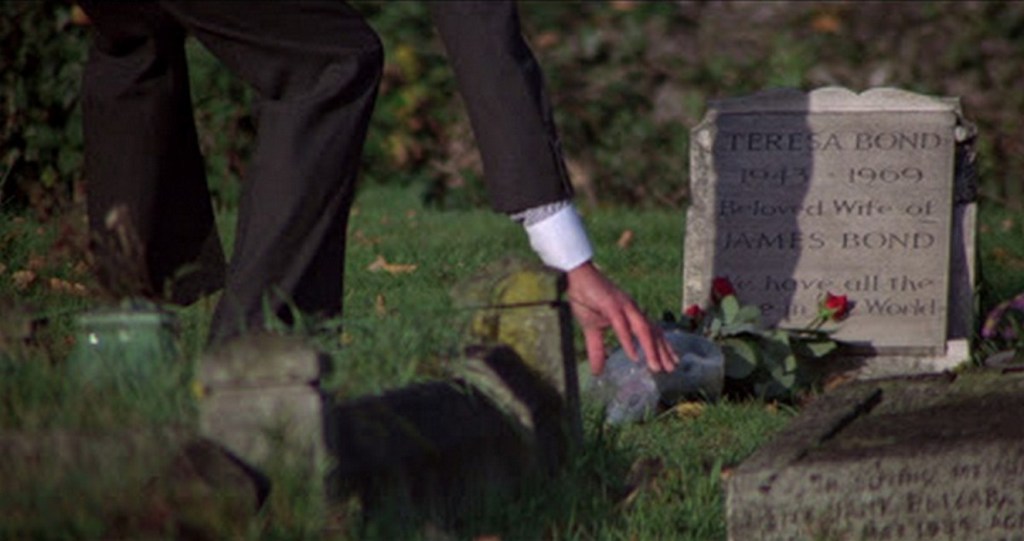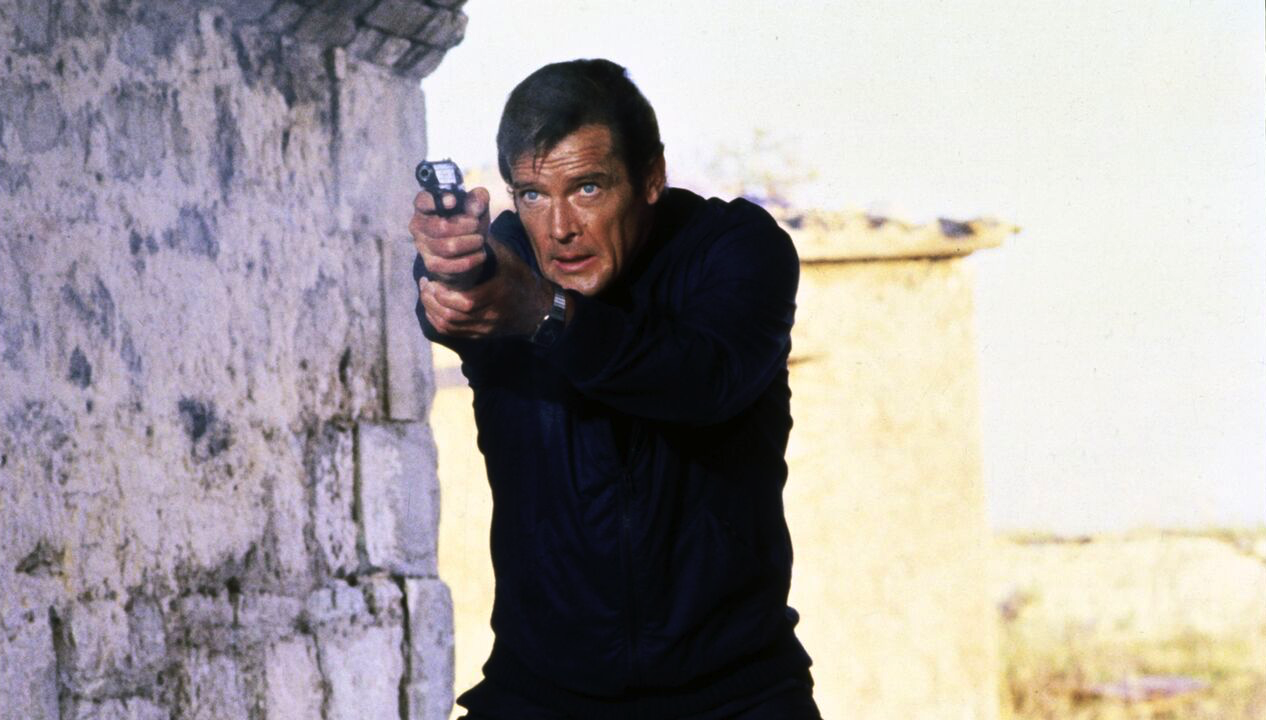For Your Eyes Only, which celebrates its 40th anniversary this week, was a transitional James Bond film. Released in 1981, this 12th entry in the long-running series, and Roger Moore’s fifth outing as the man in the tuxedo, was deliberately styled as a return to the 007’s roots after he went to space in the over-the-top Moonraker (1979): the one where series producers did their best to compete with Star Wars. By contrast Eyes seemed stripped down and also marked the debut of John Glen in the director’s chair—a position he would hold for a series-most five entries. He received that promotion after working on several previous installments as a second unit director.
But Eyes was also meant, at one point, to usher in the most important change in any Bond movie: the introduction of a new actor in the role of 007.
Roger Moore’s original contract was for three films, with his participation going on a film-by-film basis starting with Moonraker. Following the completion of that film, rumors surfaced that Moore was ready to retire from the role, leading 007 production company Eon Productions and producer Albert “Cubby” Broccoli to begin the search for a new Bond.
But Moore himself suggested that he wanted to continue in the role, and that the highly publicized audition process was all part of the negotiations to bring him back.
“I understand that Eon had been holding casting sessions where would-be James Bonds were tested with a view to replacing me,” Moore was quoted as saying in The James Bond Archives. “It didn’t bother me, as I knew Cubby would never find anyone who would work as cheaply as I did.”
Moore added, “To be honest, I did want to do another film. But this was all part of the bargaining ploy on Eon’s side: let it be known that they were testing others so I’d take the deal on the table for fear of losing the part. Fair enough, we all enjoy a game of poker.”
Ploy or not, Eon and John Glen did proceed with a series of screen tests that included a number of actors who were well-known in England (and in some cases internationally) but relatively obscure in the U.S. Those included Ian Ogilvy (Witchfinder General), Lambert Wilson (the Merovingian in the Matrix sequels), Lewis Collins (The Professionals), David Warbeck (The Beyond), David Robb (Downton Abbey), Michael Jayston (the 1986 Doctor Who arc “The Trial of a Time Lord”), and Nicholas Clay (Excalibur).
“We searched high and low,” said Glen in The James Bond Archives. “I tested no end of people. Roger was in the background with a smile on his face, waiting to be called.”
Read more
There were three notable candidates for the job that stand out now. One was Timothy Dalton, who had been considered for the role as far back as 1968 when Sean Connery first vacated the tux. He allegedly declined a shot at For Your Eyes Only because he had seen Moonraker and thought the series was going for more of the same. He would get his chance six years later.
The second was Michael Billington, a British actor who was often used as a Bond stand-in to screen test leading ladies and even had a role in The Spy Who Loved Me as the Russian agent 007 kills in the opening sequence. Billington tested for Bond five times—he was reportedly on standby for Eyes if a deal couldn’t be closed with Moore—but ended up always a bridesmaid.
The third and most fascinating name was James Brolin. It’s a little unclear when Brolin’s involvement with the 007 franchise began, but he was apparently considered for Eyes and was later given a full screen test and even hired for 1983’s Octopussy after Eon and Moore began another game of chicken about Moore’s return. Brolin—a respected actor, not to mention husband of Barbra Streisand and father of Josh Brolin—was the second American thespian who came close to playing the British agent; John Gavin was signed in 1971 before Sean Connery came back for an encore in Diamonds Are Forever.
But that’s another story. In the end, Moore did come back for Eyes, although his contract was not completed until well into production. Glen for one was glad to have the dapper Moore back.
“As it happened, I was very pleased that Roger did it, because it helped me enormously in the fact that he was an established James Bond,” the director said in the “making-of” documentary on the Eyes Blu-ray. “If I had to take someone new and establish them in the role, it would have been quite difficult for me, I think.”
One leftover from the “will Moore or won’t he” era of Eyes’ pre-production was the opening sequence, in which we see Bond visit the grave of his wife Teresa “Tracy” Bond, who was murdered by arch-villain Blofeld and his accomplice Irma Bunt at the end of On Her Majesty’s Secret Service. The sequence initially shows Bond from the legs down, placing a bouquet of flowers on Tracy’s grave, before cutting to a shot of his face, which ostensibly would have been the new actor.

The scene was meant to establish that this was the same Bond, even if the face was different.
“It was John Glen who came up with the idea of going to Tracy’s grave,” said executive producer and co-screenwriter Michael G. Wilson on the Eyes Blu-ray. “He wanted to show a continuity of the Bond stories and show that he’s still the same character, he’s still going on, and he has a history.”
The rest of that sequence after that somber opening takes a turn for the ridiculous as Bond is trapped in a remote-controlled helicopter by a bald, wheelchair-bound villain. The bad guy is clearly meant to be Blofeld in all but name—Eon at the time had lost control of the rights to Blofeld and certain story elements involving him and criminal organization SPECTRE—but that too is an entirely different tale.
In the end, everyone involved seems glad that Roger Moore did in fact return in For Your Eyes Only: the $28 million movie earned a healthy (for 1981) $195 million around the world. While reviews for the film then and now remain mixed, the retro approach to the plot—more espionage and realistic action, less gadgets—plus Moore’s harder-edged-than-usual performance have managed to place it in the upper ranks of Moore’s seven outings, arguably second only to The Spy Who Loved Me. To coin a phrase, the more things were meant to change, the more they stayed the same.


